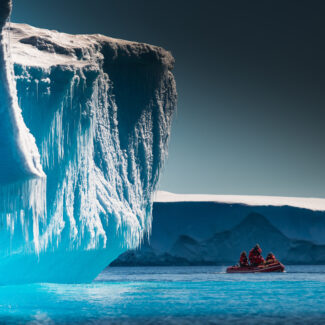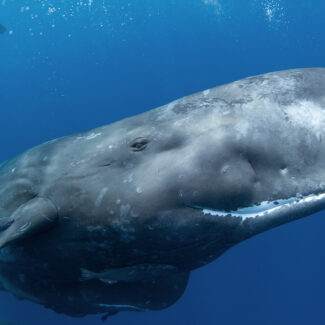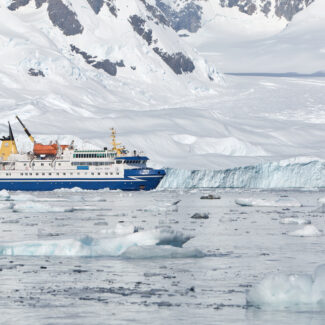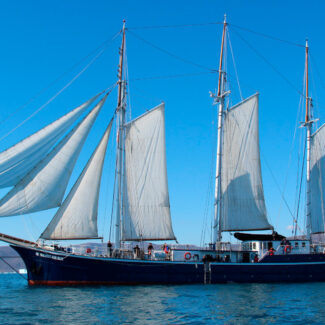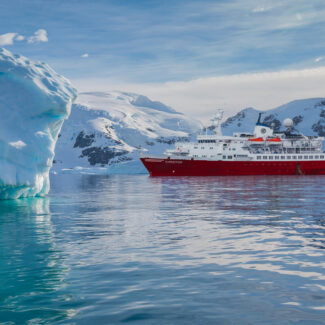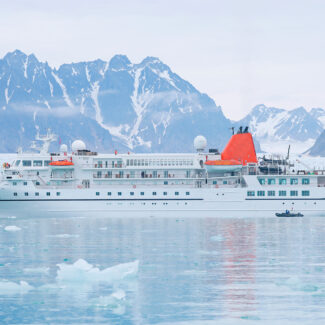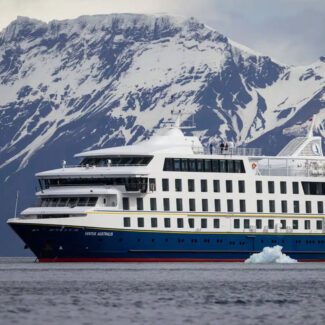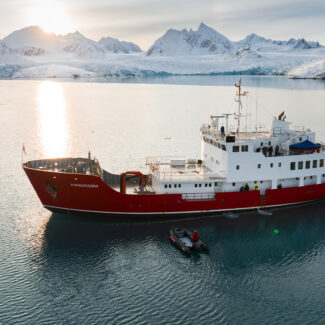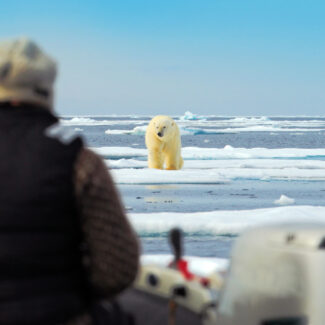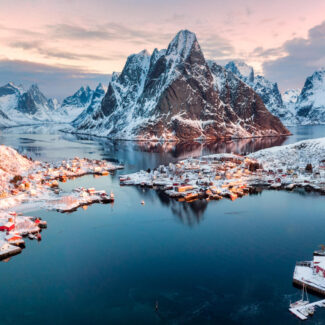The Flags Of Antarctica: True South, Territory & Treaty
A visitor to Antarctica may see any number of flags whipping about in that fierce polar wind, depending on where they travel. The seemingly stale subject of flags—unless you’re a dyed-in-the-wool vexillophile, that is—actually proves to be a pretty fascinating portal into the White Continent’s unique (and, to many, somewhat confusing) political status and its rich, adventure-filled history.
Beyond its iconic glaciers and unique wildlife, Antarctica holds a distinct identity, symbolized by its flags. While not a nation, the continent’s spirit of international cooperation and dedication to peace and science is beautifully captured in designs like this, which often represent the Antarctic Treaty System. Dive into the fascinating story behind the flags that wave over the world’s southernmost continent, each inspiring a profound sense of shared responsibility for its pristine future.
Does Antarctica Have a Flag?
There’s no official flag of Antarctica, per se. That’s mainly on account Antarctica isn’t a country, or a nation, or a sovereign state. No single political entity claims it as territory; it’s jointly overseen by a group of different nations, specifically the 50-plus states that are signatories to the Antarctic Treaty. (This makes it, technically speaking, a condominium.)
While there’s no official Antarctica flag, there are a few contenders for de facto versions thereof, not least the emblem of the Antarctic Treaty System.
The Antarctic Treaty System Flag
In 2002, the Antarctic Treaty nations adopted a flag design to represent the Treaty’s official emblem. It depicts the continent of Antarctica in (appropriately enough) white, outlined against a navy-blue background, and comes segmented by the lines of latitude and longitude converging at the South Pole in a manner reminiscent of the flag of the United Nations.
While not an official national flag, this design, often associated with the Antarctic Treaty System, beautifully symbolizes the continent’s unique status. The white continent on a field of blue represents Antarctica as a land dedicated to peace and scientific research, uniting nations under a common goal of preservation. It’s an inspiring emblem of international cooperation, urging us to protect this pristine wilderness for future generations.
Proposed/Unofficial Antarctica Flags
Since the adoption of the Antarctic Treaty, various flag designs have been put forth to represent this one-of-a-kind geographic region managed collectively under international agreement.
Among the more notable is an orange-and-white flag unveiled in 1978 by Whitney Smith, a professional vexillologist who also happened to coin that term (which means one who studies flags) and who designed or co-designed a number of national and otherwise official flags. Smith’s Antarctica flag boasts a striking orange background, which he chose for its high visibility in the White Continent’s harsh conditions and its uniqueness compared to the various national flags flown there. Against this, set to the left side of the flag, are white symbols: the letter “A” (for Antarctica, obviously) overlying a slice of a disc representing the Earth south of the Antarctic Circle, cradled below by a pair of hands which evoke human care for this precious environment.
The offset position of those white symbols on Smith’s flag are intentional: He wanted them tucked close to the flagstaff so that they’d likely remain intact and visible even if those ferocious Antarctic winds tore away the rest of the flag.
Another significant proposed Antarctic flag design is that released in 1995 by Graham Bertram, which shows the outline of Antarctica in white set against a blue background of the same hue as the U.N. flag. This has become a widely used design on account it serves as the Antarctic flag emoji (which perhaps you’ll be shortly using to text your friend circle about your upcoming White Continent cruise!).
The True South Flag
A recently developed flag design for Antarctica that’s also gained plenty of traction is one that Evan Townsend designed in 2018 while serving as a steward at an Antarctic research base. Released to the public in 2020, Townsend’s “True South” flag has been adopted by a number of national Antarctic programs, organizations, and expeditions and thus enjoys comparatively widespread usage actually on the White Continent.
The True South flag is bicolored, split into a top band of navy blue and a bottom band of white meant to represent the extreme nights and days of the Antarctic winter and summer, respectively. In the center, inversing that background coloration, a diamond shape pokes a white pyramid image into the navy-blue band: nodding to a classic Antarctic skyline punctured by icebergs, glazed peaks, and pressure ridges. This white prominence casts a shadow below forming its navy-blue inverse.
Speaking to the architecture and design magazine Dezeen in 2021, Townsend said the True South flag serves as “a really important tool to be able to create a sense of connection between the general public and this continent that they have some responsibility for.”
Among the proposed flags for Antarctica, the “True South” flag has gained significant recognition for its powerful symbolism. Its design, featuring a white peak and blue field, represents the ice and ocean of the continent, while the central star signifies hope and unity. This flag serves as an inspiring reminder of Antarctica’s shared purpose as a realm of peace and scientific cooperation, encouraging global stewardship of this pristine wilderness.
Antarctic Flags Representing Territorial Claims, National Programs, and Research Bases
Beginning in the 19th century, some nations began claiming territory in Antarctica. By the time the Antarctic Treaty was established, seven countries had territorial claims on the White Continent. While these aren’t internationally recognized (and the Antarctic Treaty both forbade enlargement of existing claims and the establishment of new ones), they’re commonly shown on maps as pie-slice divvies of this frozen wilderness.
Four of those claims come represented by specially designed flags. They include:
- The flag of the British Antarctic Territory
- The flag of the French Southern & Antarctic Lands: France’s Adélie Land claim as well as the Crozet, Kerguelen, Scattered, and Saint Paul and Amsterdam islands of the Indian Ocean
- Argentina’s Flag of the Tierra del Fuego, Antarctica, and South Atlantic Islands Province
- Chile’s Flag of the Magellanes Region, which includes the Chilean Antarctic Territory
The remaining territorial claims are represented simply by the national flags of the respective countries: Australia, New Zealand, and Norway.
Research stations in Antarctica, meanwhile, which are operated by dozens of countries that are signatories to the Antarctic Treaty, may fly national or other emblematic flags.
South Pole Flags
The U.S.-run Amundsen-Scott South Pole Station sits at the bottom of the world, and close to the actual Geographic South Pole, you’ll find the photo-op-ready Ceremonial South Pole.
Here fly the flags of the nations that were the original signatories of the Antarctic Treaty: the U.S., U.K., Russia, Norway, Belgium, France, South Africa, Australia, New Zealand, Argentina, Chile, and Japan.
At the ceremonial South Pole, a striking display of flags from the original twelve signatories of the Antarctic Treaty stands proudly, symbolizing a groundbreaking commitment to peace and science. This iconic scene, centered around the barber-pole striped marker representing the geographic South Pole, embodies a powerful message of international cooperation and unity. It’s an inspiring testament to humanity’s shared dedication to preserving Antarctica as a continent for all, free from territorial claims.
Historical Flags of Antarctic Expeditions
Along with national flags, some early expeditions helping chart out Antarctica (and, ahem, earn national and individual bragging rights) hoisted specifically designed flags, from the Scottish National Antarctic Expedition of 1910-1912 to the Transglobe Expedition of 1979-1982, which circumambulated the planet on a north-south axis through both poles.
You can eyeball some of those original banners, including the White Flag of Antarctica, carried on the British, Australian, and New Zealand Antarctic Research Expedition (1929-1931) led by Sir Douglas Mawson, on display at the Royal Maritime Museum in Greenwich, England.
Other Flags of the Antarctic & Sub-Antarctic Realms
Along with national and departmental flags (such as that of the French Southern & Antarctic Lands), some Sub-Antarctic islands fly their own flags. Those include, for example, the British overseas territories of the Falkland Islands and South Georgia and the South Sandwich Islands, the separate flags of which are both based on the British Blue Ensign.
The South Georgia and the South Sandwich Islands flag is particularly distinctive, enhanced by images of a fur seal, macaroni penguin, and reindeer (the latter introduced to South Georgia by Norwegian whalers, and only eradicated in the early 2010s).
Disclaimer
Our travel guides are for informational purposes only. While we aim to provide accurate and up-to-date information, Antarctica Cruises makes no representations as to the accuracy or completeness of any information in our guides or found by following any link on this site.
Antarctica Cruises cannot and will not accept responsibility for any omissions or inaccuracies, or for any consequences arising therefrom, including any losses, injuries, or damages resulting from the display or use of this information.


